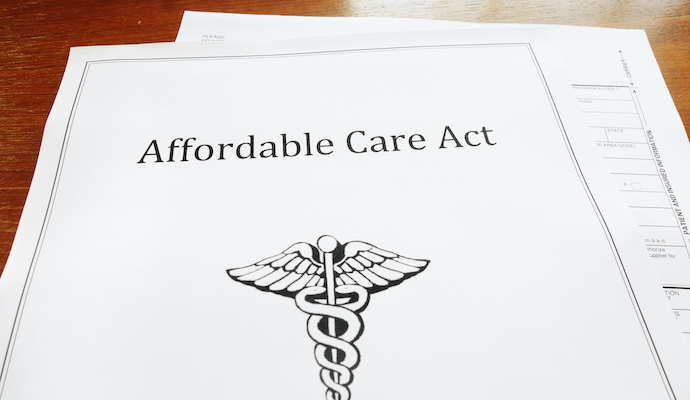Feds Reflect on the Impact of the Affordable Care Act
CMS and HHS leaders touted critical outcomes from the first 12 years of the Affordable Care Act, citing lower premiums on the marketplace and higher enrollment and coverage.

Source: Getty Images
- As the Affordable Care Act turns 12 years old, CMS and the Department of Health and Human Services (HHS) commemorate the law’s impact on the US healthcare system.
“On the 12th Anniversary of the ACA, it is clear that the Affordable Care Act and the American Rescue Plan are working to expand access to health care coverage and have been critical to advancing health equity,” said CMS Administrator Chiquita Brooks-LaSure.
As the administration celebrated the twelfth year since the Affordable Care Act passed on March 23, 2010, national healthcare leaders cited the Affordable Care Act marketplace’s enrollment record and the impact of marketplace tax credits.
In 2021, the Affordable Care Act marketplace experienced record-breaking enrollment. The marketplace added 5.8 million consumers to hit 14.5 million enrollees. HHS and CMS attributed this surge to the special enrollment period and also to the American Rescue Plan’s tax credits which lowered premiums for eligible consumers on the marketplace.
The administration stated that healthcare coverage grew in 2021, citing a report from the Office of the Assistant Secretary for Planning and Evaluation (ASPE). Simultaneously, uninsurance dropped after the American Rescue Plan went into effect. In Q4 2020, the uninsurance rate was 10.3 percent. But in 2021 Q3, that percentage fell to 8.9 percent.
“The Biden-Harris Administration’s ARP subsidies were successful and ensured that more Marketplace consumers than ever had access to quality, affordable health care and the peace of mind that comes with having health care coverage that best fits their needs,” Administrator Brooks-LaSure said.
HHS Secretary Xavier Becerra echoed these comments.
“President Biden promised to build on the success of the Affordable Care Act, and just one year into his Administration, we have already broken records with all-time high enrollment numbers and all-time low prices,” added Secretary Becerra. “We will continue working to deliver on that promise until we make health care a right for all.”
Twelve years later, the Affordable Care Act marketplace continues to evolve.
The Biden administration plans to institute a new special enrollment period. The new special enrollment period will be available for individuals whose annual household income is 150 percent of the federal poverty level or lower and who are eligible for advance payments of the premium tax credit.
The press release noted that a little less than half of the consumers who enrolled on the Affordable Care Act marketplace during the special enrollment period in 2021 (45 percent) had household incomes that matched this bracket.
The press release also pointed to the Biden administration’s intentions to bolster the Affordable Care Act marketplace through Medicaid expansion. One of the administration’s critical objectives for the Affordable Care Act marketplace is closing the Medicaid coverage gap.
The accompanying State of the ACA Report made it clear that 2021 open enrollment plan selections were record-breaking for both state-based marketplaces—which achieved 4.3 million enrollees—and the federally-facilitated marketplace—which reached 10.3 million enrollees.
In particular, states without Medicaid expansion saw higher increases in enrollment on the Affordable Care Act marketplace. For example, Texas—a non-expansion state—had a 42 percent higher enrollment rate on the Affordable Care Act marketplace in 2022 than in 2021.
Individuals in some communities that have historically had lower insurance rates were more likely to access coverage through the federally-facilitated marketplace, with Healthcare.gov enrollment rising 26 percent in the Hispanic community and 35 percent in the Black community. The report attributed this to Navigator expansions.
Aside from enrollment and coverage expansions, the report argued that the Affordable Care Act lowered costs on the marketplace and influenced the quality of care in Medicare.
In 2021, four out of five Affordable Care Act marketplace enrollees could access a plan with a monthly premium of $10 or less.
And the Affordable Care Act’s Center for Medicare & Medicaid Innovation Center has initiated over 50 models that are intended to explore ways to improve healthcare costs and service delivery. For example, the Medicare Shared Savings Program has saved the Medicare Trust Fund around $6 billion in five years.
